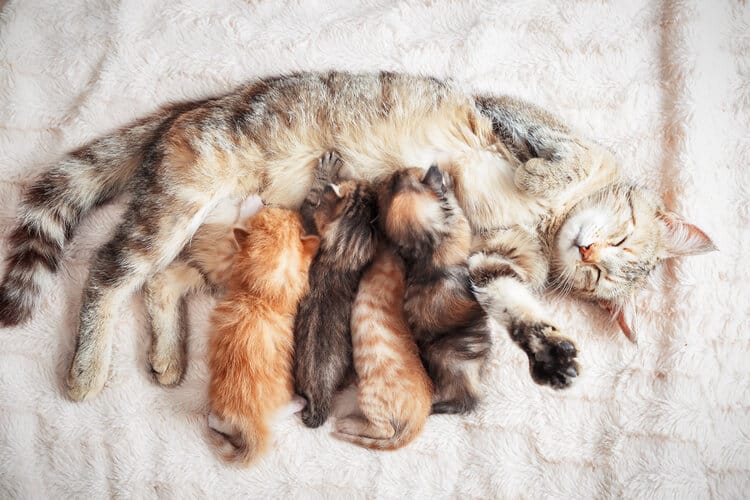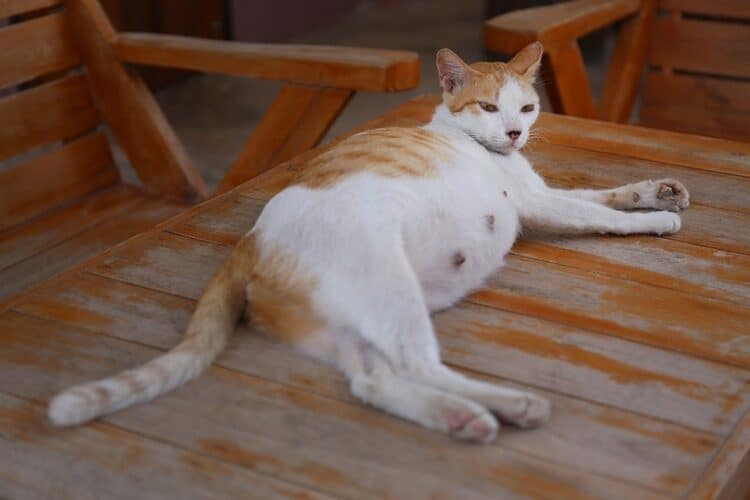If your cat has fallen pregnant, it makes sense to wonder how many kittens you should expect. You’ll find out during one of her vet appointments, but the curiosity about your expectant litter can be hard to wait to satiate. Litters of kittens vary in size from just one kitten to litters of more than ten kittens. Several factors influence the size of your cat’s litter.
What Factors Influence a Cat’s Litter Size?
Experts say that the most defining factor of a queen’s litter size is her age and health. Both parents’ genetic histories also significantly influence the litter size. Young and first-time mothers usually produce smaller litters of up to three kittens.
The breed of both parents also influences the litter size. Siamese-type cats generally have larger litters, she explains, while Persian-type cats tend towards smaller litters. Conversely, Manx cats often lose up to a quarter of the kittens shortly after birth when both parents are tailless.
Litter size can also be influenced by a cat becoming ill. Feline panleukopenia virus and feline distemper can cause the queen to birth stillborn kittens, while feline infection peritonitis can affect a cat’s fertility or reduce the kittens’ ability to thrive.
Cats who become infected with these diseases early in pregnancy may abort their pregnancies or give birth to kittens with brain or body abnormalities if they survive.

All About Cat Pregnancy: Everything You Need to Know About Your Cat’s Pregnancy
Cats are seasonal breeders. Queens generally experience an estrus cycle—colloquially referred to as a heat cycle—during the spring and summer months, when the days get longer. As the days get shorter, the queen will usually stop cycling. However, indoor cats exposed to artificial light may cycle all year long due to the artificial light.
Cats are also induced or reflex ovulators, meaning that the act of copulation is what causes the release of eggs from a cat’s ovaries. To compare this to a human, once per month, a human’s body will release various numbers of eggs from the ovaries. If these eggs are fertilized by sperm, they may implant into the uterus, and the person becomes pregnant.
On the other hand, queens do not release eggs until they engage in sexual activity with a tomcat. Tomcats have barbs on their business that stimulate the queen’s body to release eggs to fertilize. This means that if a queen mates multiple times during one estrus cycle, she can have kittens from various fathers.
One of the most significant risks for large litters is that the queen won’t be able to care for all the kittens properly, or the kittens will be born with genetic abnormalities that cause her to reject otherwise healthy kittens. If the queen refuses some or all of the kittens, you’ll need to hand raise the kittens she leaves.
Rejected kittens will usually be placed outside the nest where the other kittens are nursed. The queen will refuse to nurse the kitten and may hiss or swat at the kitten to get it to leave her other kittens alone. If your queen has rejected some of her kittens, you’ll need to tube feed them with kitten milk replacements. These milk substitutes contain extra taurine not found in baby formula. Kittens need more taurine than human babies and will be malnourished without it.

The World’s Largest Litters: What’s the Record?
According to the Guinness Book of World Records, the largest litter of domestic cats was a litter of 19 born to a Burmese/Siamese queen in Kingham, Oxfordshire, in the U.K. The kittens were born on August 7, 1970, but four were stillborn. Only one of the surviving kittens was male.
The second largest litters were a tie of 15 kittens born in 1976. The litter was born in New York and included four stillborn kittens. The other litter was born in Havelock, Ontario, Canada and all kittens survived.
Final Thoughts
According to some, watching new life come into the world is one of the most beautiful things you can witness. Admittedly, cats have much smoother pregnancies than most humans, but even cats with huge litter experience frequent complications from their litter size! Preparing for your cat’s pregnancy is the best way to ensure it goes smoothly and having a veterinarian involved will provide the best survival odds for your cat and her kittens!
Featured Image Credit: Shutterstock














